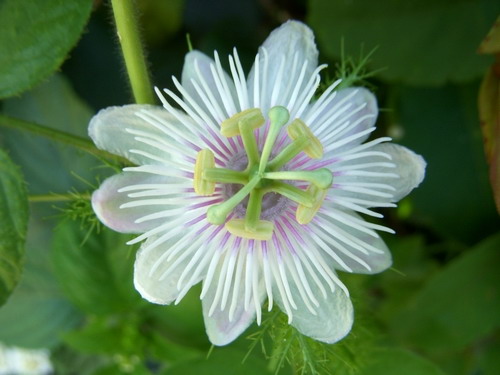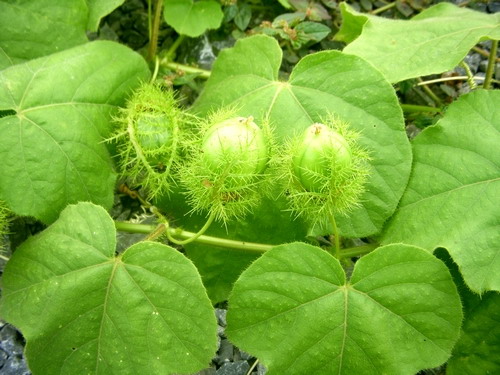Passiflora foetida L.
English name: Passion-flower, Stinking Passion-flower
Description of the plant: A slender climber. Leaves palmately 3-lobed, 3.8-6.3 cm long. Flowers 2.5 cm across, white with purple centre, solitary, axillary, with an involucre of finely pinnatifid bracteoles. Fruit like a small gooseberry, yellow when mature.
Using information: The plant is used in the form of lotions or paste for skin diseases with inflammation. Hot infusion of the dried plants is useful for sore throat. Leaves are considered emmenagogue; prescribed in hysteria, applied to head in giddiness and headache; decoction is used in biliousness and asthma. Fruits are emetic (Yusuf et al. 2009).
Chemical constituents: Five flavonoids, pachypodol, 4, 7-dimethylnaringenin, ermanin, 4, 7-O-dimethyl naringenin and 3, 5-dihydroxy-4, 7-dimethoxy flavanone, have been isolated from the leaves. Ten flavonoids (apigenin), including ermanin, have been isolated from the resin present in the stem. The plant also contains indole alkaloids (Harman 70µg/100g), hydrogen cyanide and cyanogenic glycosides (Ghani, 2003).
Distribution:
More of less throughout the country in fallow lands.



